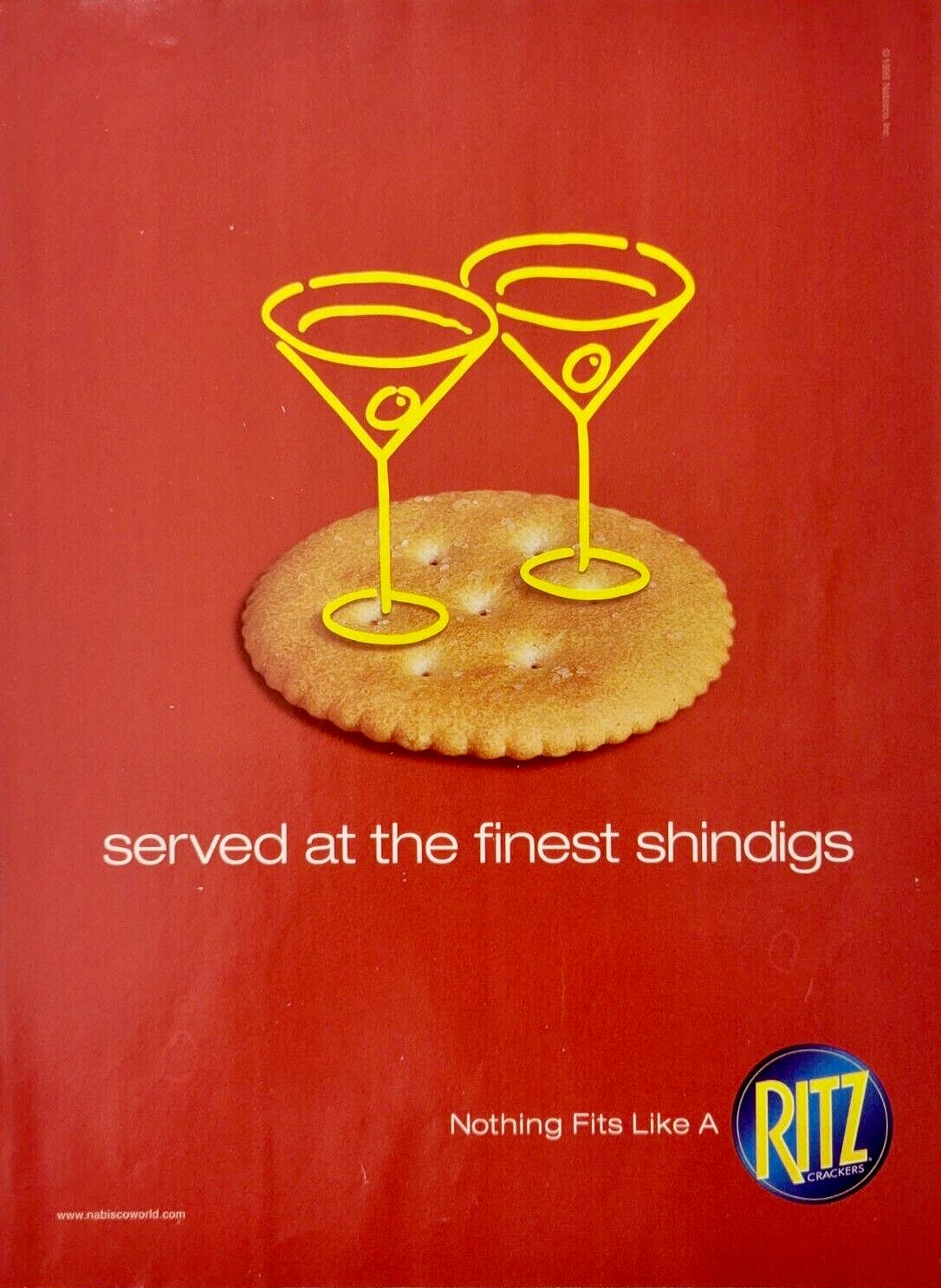Advertising: Branding
Name, What’s in a: Ritz
Reservations Recommended, Chapter 5:
Two waiters arrive immediately, as soon as Matthew and Leila have made a move in the direction of a table. One pulls the table out from the banquette, too quickly, too far out into the room, with too much brio. The other bows, says, “Good evening, sir, madam,” and deposits a plate with a crock of pâté and a ring of Ritz crackers on the table in front of them.
Ritz crackers? cries BW.
In the early 1900s, the Jackson Cracker company of Jackson, Michigan, developed a small, round cracker called the Jaxon. The company was bought out by Nabisco [at that time the National Biscuit company] in 1919. Nabisco introduced the Ritz Cracker in 1934. Looking to compete with the similar Hi Ho cracker made by their competitor Sunshine Biscuits, they tasked an employee, Sydney Stern, to create a name and a marketing plan. Stern chose the name “Ritz,” which appealed to individuals enduring the privations of the Great Depression by offering them “a bite of the good life.” He also designed the blue circle/yellow lettering logo design, inspired by the round label inside his hat.
César Ritz (23 February 1850 – 24 October 1918) was a Swiss hotelier and founder of several hotels, most famously the Hôtel Ritz in Paris and the Ritz and Carlton Hotels in London (the forerunners of the modern Ritz-Carlton Hotel Company). He was an early hotel chain founder known as “King of Hoteliers, and Hotelier to Kings,” and it is from his name and that of his hotels that the term ritzy derives. […]
The hotelier himself withdrew progressively from the affairs of his various companies, […]
By 1912, according to Marie-Louise Ritz, to all intents and purposes his life had finished. In 1913, he was placed in a private hospital at Lausanne, and the following year he was moved to another on Lake Küssnacht in Canton Schwyz. He died at Küssnacht on 26 October 1918. Although from a humble Swiss background, César Ritz and his luxurious hotels became legendary, and his name entered the English language as an epitome of high-class cuisine and accommodation. He is buried in the village of his birth.
See also:
Advertising: Types of Appeal TG 373; “The Grass Is Greener,” Exoticism TG 441, TG 442; Appeal to Desire to Enhance One’s Self-Image TG 476, TG 484; Appeal to Sensual Pleasure TG 476
Name, What’s in a TG 38, TG 43, TG 96, TG 450, TG 483; Names, Pronunciation of TG 44; Names and Naming: Place-Names TG 54; Names, Pronunciation of TG 414
From the Voltaire Foundation to my Department of Iconography:
In his Lever de Voltaire of 1772 Jean Huber depicted the philosophe getting dressed in a somewhat awkward position. The picture was a great success: it was engraved in Paris and in London, reproduced many times and broadly circulated and sold. [i.e. It went viral. MD] Voltaire accused Huber of turning him into an object of ridicule. But Huber countered that he knew exactly ‘the dose of ridicule’ that was necessary to Voltaire’s celebrity.
Indeed, this image was very different from traditional portraits of writers. Here, Voltaire was not displayed as a prestigious author with his books and pens, but as a private individual. It was precisely because Voltaire was well-known – because he had become a public figure — that the public was eager to stare at him even through the mediation of print, in the intimacy of his bedroom, performing ordinary activities. The painting’s appeal rested on the impression it created of a voyeuristic glimpse of Voltaire’s intimate life. It is exactly the same mechanism that drives today’s paparazzi. Thus, the interest of the public (its empressement as Huber put it) was not based on genuine admiration but rather on curiosity and a desire for intimacy, a strange mixture of distance and proximity, of greatness and familiarity.
Have you missed an episode or two or several?
You can begin reading at the beginning or you can catch up by visiting the archive or consulting the index to the Topical Guide.
You can listen to the episodes on the Personal History podcast. Begin at the beginning or scroll through the episodes to find what you’ve missed.
You can listen to “My Mother Takes a Tumble” and “Do Clams Bite?” complete and uninterrupted as audiobooks through YouTube.
You can ensure that you never miss a future issue by getting a free subscription. (You can help support the work by choosing a paid subscription instead.)
At Apple Books you can download free eBooks of Little Follies and Herb ’n’ Lorna.
You’ll find overviews of the entire work in An Introduction to The Personal History, Adventures, Experiences & Observations of Peter Leroy (a pdf document) and at Encyclopedia.com.






